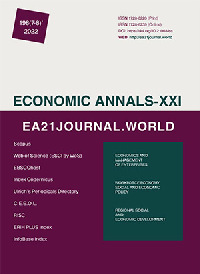An improvement of supplier-manufacture inventory system integrated with stochastic periodic review modeling for SMEs in Indonesia
An improvement of supplier-manufacture inventory system integrated with stochastic periodic review modeling for SMEs in Indonesia
Author(s): Parama Kartika Dewa, Yuharningsih Patanduk, - JumintonoSubject(s): National Economy, Business Economy / Management
Published by: Institute of Society Transformation
Keywords: Inventory System; Supplier; Manufacture; Sales; Supply Chain; Craft Business; Handicraft; Banana Raw Materials; Mendong Raw Materials;
Summary/Abstract: SME LCR is one of the handicrafts SME in Yogyakarta, Indonesia. This SME produces several handicraft products such as storage baskets with various variants, and furniture. The process of ordering raw materials for SMEs is carried out when there is a demand for incoming products with the order quantity based on the raw material needs in meeting product demand. This study intends to provide recommendations for improving raw material governance to overcome demand fluctuations during the lead time and reduce the total cost of supply chain inventory by implementing an integrated inventory system. To meet the study aim, the EOQ Probabilistic P system (Period Review Method) is utilized. The P inventory model is distinguished into two models namely model P with backorder and model P with lost sales. Next, the Purchase Cost (Ob) and Procurement Costs are applied to the P model. The research method comprises through 3 stages: the pre-field stage, field stage, and the advanced stage (laboratory analysis, data analysis, and reporting). Given the results regarding banana and mendong raw materials supply, it can be observed that for banana raw materials, the reorder time interval that can generate the minimum total inventory cost for banana raw materials is 0.1470 years or 53 days with a total cost of IDR 263,721,081.72. Moreover, it is seen that the suggested model generates the minimum total cost of supply chain inventory compared to the SME policy and the individual model, which justifies the economic feasibility of this model.
Journal: Економічний часопис - ХХІ
- Issue Year: 198/2022
- Issue No: 07+08
- Page Range: 24-33
- Page Count: 10
- Language: English

